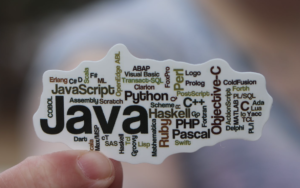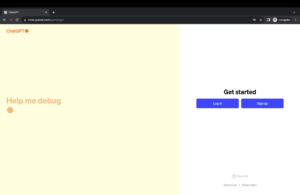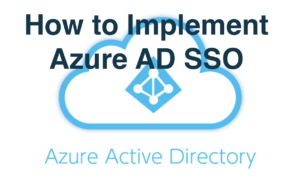Backend frameworks are important part of any web application development. Backend framework language use for data relationship with database and worked as a middleware in most of the cases.
What is backend development framework?
Backend frameworks play a crucial role in web application development by handling the server-side logic, managing data interactions with databases, and serving as middleware to facilitate communication between the front end and the database.
The choice of a backend framework is often influenced by factors such as programming language preference, project requirements, scalability, and community support.
Table of Contents:
1 – What is backend frameworks?
2 – What are top 5 backend development framework?
2.1 – Java Spring Boot
2.2 – Node Express
2.3 – Django (Python)
2.4 – Laravel (PHP)
2.5 – Ruby on Rails
3 – Conclusion
4 – FAQs
Top 5 Backend Development Framework: below are most used backend frameworks list.
1 – Spring Boot
Spring Boot is an extension of the Spring framework and simplifies the process of building production-ready applications with Java. It includes various features such as dependency injection, data access, and security. Spring Boot is a popular choice for backend development, and developers often choose it for several reasons.
1 – Comprehensive Spring Ecosystem: Spring Boot is favored for its integration with the broader Spring ecosystem, renowned for its extensive features and support for complex enterprise applications. With dedicated modules for diverse concerns like data access, security, and messaging, developers benefit from a well-established framework.
2 – Accelerated Development: Spring Boot’s embrace of convention over configuration and opinionated defaults expedites the development process. Developers can initiate new projects swiftly, bypassing the need for extensive boilerplate code. This expedites development while promoting a consistent and streamlined codebase.
3 – Embedded Servers for Simplified Deployment: The inclusion of embedded servers such as Tomcat, Jetty, and Undertow allows developers to package applications as standalone JAR or WAR files, complete with the server. This simplifies deployment, reduces external dependencies, and enhances the application’s portability.
4 – Auto-Configuration for Reduced Manual Setup: Leveraging auto-configuration, Spring Boot automatically configures applications based on dependencies detected in the classpath. This diminishes the need for manual configuration, freeing developers from mundane setup tasks.
5 – Microservices Architecture Support: Spring Boot is well-suited for constructing microservices-based architectures. It provides tools and conventions tailored to the unique challenges of developing, deploying, and managing microservices, facilitating the creation of scalable and modular applications.
6 – Thriving Community and Extensive Documentation: Boasting a large and active community, Spring Boot offers abundant documentation, tutorials, and community-driven resources. This vibrant ecosystem ensures robust support for problem-solving, learning, and staying current with best practices.
7 – Seamless Integration with Spring Cloud: For those venturing into distributed systems or microservices, Spring Boot seamlessly integrates with Spring Cloud. Spring Cloud supplies essential tools and patterns for constructing and deploying cloud-native applications.
8 – Built-in Security Features: Spring Boot is equipped with built-in security features, simplifying the implementation of authentication and authorization. Its seamless integration with Spring Security provides a powerful and customizable framework for managing access control.
9 – Enterprise Adoption: Spring Boot’s widespread adoption in the enterprise sphere underscores its reliability and suitability for mission-critical applications. Many large organizations entrust Spring Boot for their crucial projects, attesting to its stability and robust performance.
10 – Mature Ecosystem with Abundant Third-Party Support: The maturity of the Spring ecosystem ensures stability, backward compatibility, and a rich assortment of third-party libraries and extensions. This wealth of resources allows developers to tap into a diverse array of tools to enhance their projects.
2 – Node / Express.JS
Node Express framework is one of the latest backend framework in 2024, Node.js allows developers to execute JavaScript code on the server-side, enabling the use of a single programming language (JavaScript) for both client-side and server-side development.
Express is web application framework for node. It is a minimal and flexible Node.js web application framework that provides a set of robust features for web and mobile applications. It is designed to create web servers and APIs quickly.
What are key features of Express: Main features of express framework are
1- Middleware: it act as a middleware, and have much more capabilities.
2- Routing: Express simplifies the creation of routes for handling different HTTP methods (GET, POST, PUT, DELETE) and URL patterns
3- Template file engines: Express allows the integration of various template engines like EJS, Pug, or Handlebars to generate dynamic HTML content on the server side.
4- Static file serving: Express facilitates the serving of static files (such as images, stylesheets, and JavaScript files)
5- Rest API development: Rest development is easy with this framework.
6- Asynchronous and Non-blocking: Most important feature making it a fast.
7- Lightweight and flexible: Very lightweight , no so much settings.
3 – Django (Python Development)
Django stands out as an elevated web framework designed for Python, aligning with the model-view-controller (MVC) architectural paradigm. This framework incorporates a robust object-relational mapping (ORM) system, simplifying the intricacies of database interactions and enhancing the overall efficiency of working with databases.
Advantages of Embracing Django:
1. Security:
- Robust Cybersecurity Measures: Django prioritizes safeguarding against cyber threats by implementing robust security mechanisms. This ensures a resilient defense against potential vulnerabilities.
2. Scalability:
- Adaptable to Changing Demands: Django exhibits adaptability, seamlessly scaling to meet evolving requirements. Its architecture is designed to accommodate growth, making it well-suited for applications experiencing variable workloads.
3. Rapid Development:
- Streamlined Development Process: Django expedites the development journey by providing a feature-rich framework. Its emphasis on convention over configuration and pre-built functionalities accelerates the creation of robust and fully-featured applications.
4. Versatility:
- Diverse Application Handling: Django showcases versatility in managing a spectrum of applications, ranging from scientific platforms to sophisticated content management systems. Its flexibility makes it an ideal choice for a wide array of use cases.
4 – Laravel (PHP)
Laravel is a popular PHP web application framework, it is one of the best php framework now.
Advantage of using Laravel Framework
1 – Syntax:
- Laravel boasts an elegant and expressive syntax, making PHP code more readable and enjoyable. It prioritizes developer-friendly syntax conventions, enhancing the overall development experience.
2 – Model-View-Controller (MVC) Architecture:
- Following the MVC architectural pattern, Laravel structures code into models (data handling), views (presentation layer), and controllers (application logic). This separation aids in code organization, maintainability, and scalability.
3 – Blade Templating Engine:
- Laravel uses the Blade templating engine, which provides a simple yet powerful way to create dynamic views. Blade templates are designed for readability and allow the inclusion of PHP code directly within the views.
4 – Community and Documentation:
- Laravel has a thriving community and extensive documentation. The community actively contributes to packages and resources, and Laravel’s documentation is comprehensive, making it easy for developers to learn and troubleshoot.
5 – Laravel Vapor:
- Laravel Vapor is a serverless deployment platform for Laravel applications. It simplifies the deployment process by handling server provisioning, scaling, and maintenance, allowing developers to focus on building features.
5 – Ruby on Rails
Ruby on Rails, often simply referred to as Rails, is a web application framework written in the Ruby programming language. Developed to prioritize developer happiness and productivity, Rails follows the principles of convention over configuration and don’t repeat yourself (DRY). Released in 2004 by David Heinemeier Hansson, Rails has since gained widespread popularity and has been used to build numerous successful web applications.
Advantage of using Ruby on rails development framework.
1 – Convention over Configuration (CoC):
- Rails follows the CoC principle, which means that the framework makes assumptions about the best way to accomplish certain tasks. This reduces the need for explicit configuration, promoting a standardized and consistent development approach.
2 – Model-View-Controller (MVC) Architecture:
- Rails adheres to the MVC architectural pattern, dividing the application into models (data handling), views (presentation layer), and controllers (application logic). This separation of concerns enhances code organization and maintainability.
3 – Active Record ORM:
- Rails includes the Active Record ORM (Object-Relational Mapping), simplifying database interactions. Developers can work with databases using Ruby objects, making database-related tasks more intuitive and reducing the need for complex SQL queries.
4 – Ruby Language:
- Rails is built on the Ruby programming language, known for its elegant syntax and focus on developer happiness. Ruby’s readability and expressiveness contribute to a productive and enjoyable development experience.
5 – Scaffolding:
- Rails provides scaffolding generators that automatically generate boilerplate code for creating models, views, and controllers. This feature accelerates the initial development phase, allowing developers to quickly set up a basic application structure.
6 – Gems and Plug-ins:
- Rails leverages the RubyGems package manager, allowing developers to easily integrate additional functionality into their applications through gems and plug-ins. This modular approach enhances the extensibility of Rails applications.
7 – Active Support Library:
- The Active Support library extends Ruby’s core classes with additional methods and utilities, providing helpful functionalities like date formatting, string manipulation, and more.
8 – Integrated Testing Framework:
- Rails includes a built-in testing framework that supports the creation of unit tests, functional tests, and integration tests. Test-driven development (TDD) is encouraged, contributing to the development of robust and maintainable code.
9 – RESTful Routing:
- Rails emphasizes RESTful principles for designing web applications, making it straightforward to define clean and resource-oriented routes. This contributes to a more organized and predictable URL structure.
10 – Community and Documentation:
- Rails has a vibrant and active community, and its extensive documentation makes it easy for developers to learn, share knowledge, and find solutions to common challenges.
Conclusion:
Each of these frameworks excels in specific areas and is chosen based on factors such as programming language preference, project requirements, scalability needs, and community support. Developers often evaluate these frameworks based on their unique strengths to ensure the best fit for their backend development projects.
FAQs
Q1. Is node JS a backend framework?
Ans: Node.js is predominantly utilized for backend development among various frameworks.
Q2. Is Java a backend framework?
Ans: Yes
Q3. Which is the best language for backend?
Ans: It depends on various factors such as the specific project requirements, developer expertise, and the goals of the application.
Q4. Which is easy frontend or backend?
Ans: Backend is easier than front end, in front end developer need to learn html, css , js, framework, also work on responsive development leads to learn more.





